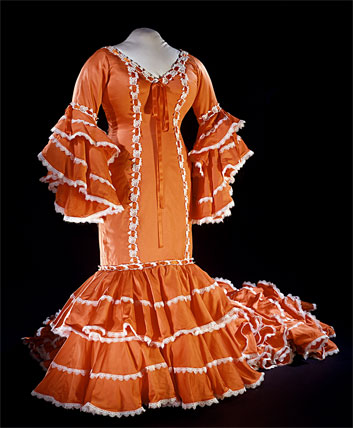As COVID-19 deaths spiked in 2020, Suzanne Firstenberg’s public art installation "In America: How could this happen…"
History Explorer Results (1131)
Related Books (0)

Grade Range:
K-12
Resource Type(s):
Artifacts, Primary Sources
Date Posted:
11/6/2008
During World War I, machine guns were heavy, crew-served weapons. Their operation required several soldiers. Even so-called light machine guns could not easily be handled by single soldiers. To meet the need for an individual rapid-fire weapon, several inventors devised submachine guns. Light eno

Grade Range:
K-12
Resource Type(s):
Artifacts, Primary Sources
Date Posted:
10/19/2009
The sheer size of the California gold strike altered the nature of American numismatics. It was not only that mintage figures dramatically increased; the actual range of denominations increased as well. Prior to 1849, there had been three gold coins: the quarter eagle, half eagle, and eagle

Grade Range:
K-12
Resource Type(s):
Artifacts
Date Posted:
4/7/2016
Invention rarely stops when the inventor introduces a new device. Thomas A. Edison and his team worked to improve his electric lighting system for some years after the initial introduction in 1880. This lamp shows the changes made after six years of labor aimed at lowering costs and increasing pr

Grade Range:
K-12
Resource Type(s):
Lessons & Activities
Date Posted:
2/15/2017
Working with a teacher, students will recreate some of the electrical experiments originally performed by Benjamin Franklin between 1746 and 1754. These hands-on experiments highlight Franklin’s innovative contributions to science and government. Visitors will experience static electricity and

Grade Range:
K-12
Resource Type(s):
Artifacts
Date Posted:
4/16/2018
The glass ballot jar became a symbol of democratic self-government. This 1884 glass ballot jar is typical of the transparent devices used to secure paper ballots.

Grade Range:
K-12
Resource Type(s):
Artifacts, Primary Sources
Date Posted:
9/3/2020
A U.S. Border Patrol official reviews a bracero's documents while others wait in line to be processed at the Hidalgo Processing Center, Texas.

Grade Range:
K-12
Resource Type(s):
Artifacts
Date Posted:
12/30/2020
Some girls made history by simply going to school and claiming their right to belong. Minnijean Brown is one of those girls. In 1957, she and eight classmates integrated the all-white Central High School in Little Rock, Arkansas, during the civil rights movement. White students physically and verbal

Grade Range:
K-12
Resource Type(s):
Artifacts, Primary Sources
Date Posted:
1/29/2009
Arthur Ashe (1943-1993) bought this Head tennis racket in 1975 and used it in competitions including Wimbledon and the Davis Cup. When he began his career in 1955, he was challenged by racial prejudice. But the young man from Richmond. Virginia, broke down these barriers, becoming a Grand Slam to

Grade Range:
K-12
Resource Type(s):
Artifacts, Primary Sources
Date Posted:
9/20/2009
Mariachis, groups comprised of vocalists, trumpeters, violinists, and various bass and guitar players, are today considered Mexico's traditional musical ensemble. Originally from the state of Jalisco, mariachi music transformed itself from a regional to a national music between the 1930s and 1950

Grade Range:
K-12
Resource Type(s):
Artifacts, Primary Sources
Date Posted:
12/18/2008
This is a Bata Cubana, or Cuban Rumba dress, donated to the Smithsonian by Celia Cruz, the great Cuban salsa singer in 1997. An adaptation of the traditional Cuban rumba dress, it was made in the United States by Cuban-born designer José Arteaga. The Bata Cubana has its roots in the 19th century









